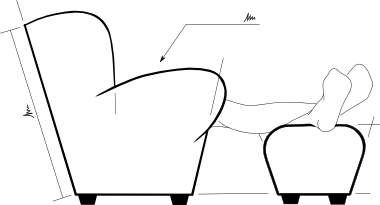Glued, laminated structural components
While looking for alternatives to industrial forming of aluminium, I hit on the idea of using laminated wood for components. This is actually quite a sensible idea, wood can be formed into curves as it’s laid-up and will stay in that shape afterwards, and it has good tensile strength along the grain.
I have a background involving laminated comosite materials, and reading the project instructions for Mark Frauenfelder’s simple longboard so soon after finding out how expensive it is to bend aluminium tube got me thinking.
A little research later and I’m reading about glulam (glu-lam or gluelam): glued, laminated timber. An architectural material that you’ve quite probably seen without realising it, where large structural beams are made by laminating strips of timber together. It has some particular advantages over plain timber:
-
Not limited by tree size — because large beams are made from smaller parts, the lamination breaks can be offset so “any” length beam can be manufactured.
-
Less twist — unlike a piece of continuous timber, the rings in the wood are not-continuous in a gluelam beam, so the beam is less likely to twist or warp.
-
Even mechanical properties — like it’s tendency not to twist, the laminations mean the material properties of the wood; which vary naturally; are distributed more evenly in the beam.
-
Can be curved — by laying up the thinner, more flexible laminations into a curve and the resultant beam will hold it’s shape after the adhesive has cured. This means that it’s possible to produce curved structural wood pieces without having to cut across the grain of the wood.
So where will you have already have seen gluelam? any large building with a curved roof held up by wooden beams. Have a look at the the Wikipedia page for some examples.
Curved Wooden Beams
Curved wooden beams are the principal reason to use gluelam for velomobile chassis components. If there was a way to lay-up shaped beams from pre-cut, flat stock, without requiring a jig (…) then that could do away with any requirement to bend aluminium tubing.
Trying to curve a thick wooden beam is pretty difficult, when the wood bends, the outside of the beam is put in tension, and the inside in compression. The thicker the beam being bent, the greater the stress for the same bend and the greater the risk of splitting the wood.
If instead, the beam is split into thinner layers and bent, the layer slip over each other when the wood is bent, each layer is in tension and compression, but a lot less than a solid beam, so if the laminations can be held in this position until the adhesive between the layers cures. Then, if the adhesive is strong enough to resist the small inter-laminar stresses, the beam will remain in exactly the shape it set.
See also:
-
The Glued Laminated Timber Association (UK)
-
The APA (USA)
-
Some images from the Versowood Group

alphydan wrote, “A very nice example can be seen in this picture of a bamboo bicycle, http://www.designboom.com/weblog/images/images_2/anita/DESIGN/t2o_02.jpg or for the whole bike, http://www.designboom.com/weblog/cat/8/view/16813/antoine-fritsch-t2o-bamboo-electrical-bike.html Also, are you aware of the work on the moskito velomobile? http://www.mosquito-velomobiles.com/wood.htm All the best, Alvaro”